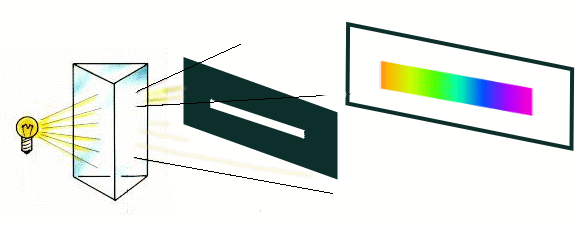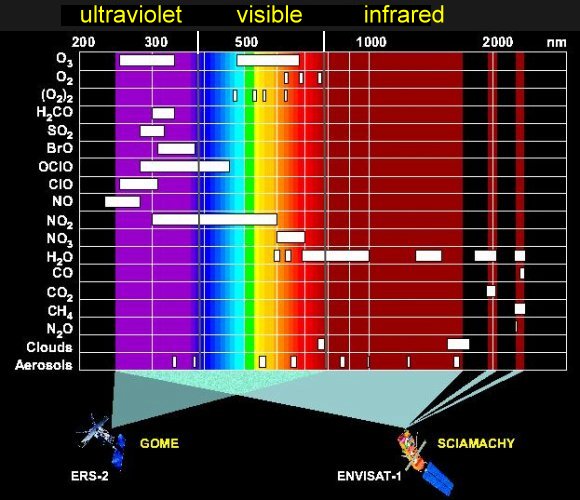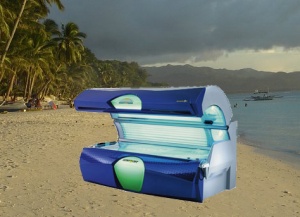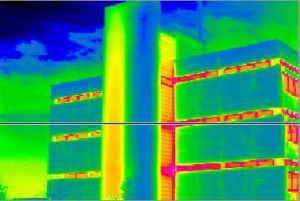 > ACCENT en > Nr 4 Oct. 2005 light/satellites > C: Observing light
> ACCENT en > Nr 4 Oct. 2005 light/satellites > C: Observing light
|
Light and matter
|
|
 |
|
1. Spectrum of white light
|
|
However, white light is composed of various wavelengths. If we see them separately, they appear as colours. Each colour has a different wavelength and a different energy. Blue light is of higher energy than red light. |
|
If we are lying in the sun for a long time it harms our skin. We get sunburn. In artificially lit rooms this does not happen. Sunlight includes a certain sort of radiation which has a very high energy and changes the cells and molecules in our skin. We cannot see this damaging light because our eyes do not have receptors for it. This 'invisible light' has a higher energy than the blue and violet light we can see. This is why we call it 'ultraviolet' light.
|
We can make ultraviolet light visible for our eyes if we irradiate a chemical substance with UV-light which sends back visible light to our eyes, for example a screen made of zinc sulfide. The spectrum of electronmagnetic waves also continues beyond the red light but this radiation has less energy. It does not harm our skin and we do not see it but we feel it as warmth. It is emitted for instance by a red-light lamp.
|
|
|
|
 |
|
6. a) Spectrum of a light source emitting continuous lightAfterwards we may install the prism in a chamber filled with sodium steam. The sodium takes up light of a certain energy, which is missing in the spectrum. A dark bar appears.
|
 |
|
6. b) Absorption by sodium vapour in the yellow region of the spectrum
|
|
Fraunhofer Lines |
 |
|
7. Fraunhofer lines - witnesses of the absorption in the atmosphere of the sun
|
If we study the spectrum of the sun in detail we see that there are some more black lines. We call them Fraunhofer lines. They are caused by the absorption of light in the atmosphere of the sun and tell us about the elements there.
|
|
|
Satellite measurements Now we have an idea of how satellites observe the number of molecules of a chemical compound in the Earth's atmosphere. The instruments located on the satellites (spectrometers) register the fraction of the normal light which is absorbed by the molecules. This fraction is missing in the spectrum of the light reaching the instrument. The spectrometer described in the article "research", called SCIAMACHY, measures light in the ultraviolet, visible and infrared regions. Ozone primarily absorbs in the ultraviolet.
|
 |
|
9. Measurement range of the spectrometer in the SCIAMACHY and GOME instruments © IUP Bremen
|




